What Is Sustainable Packaging And How Is It Defined?
Sustainable packaging is all the rage these days. It is one of the most popular and talked about trends in the packaging industry.
Sustainable packaging claims to create less of a negative impact on our planet earth. It makes people feel good about the products they buy.
But, what is sustainable packaging? How is it defined? What are the most sustainable packaging materials currently available?
These are but a few of the questions we receive on a regular basis about the sustainable packaging materials that we sell.
Many consumers want to buy these earth-friendlier packaging materials. But, they also want to know what makes them "sustainable."
This article will explain what sustainable packaging materials are and how they are defined.

What Is Sustainable Packaging?
Sustainable packaging is packaging that produces the most negligible impact on the natural environment. Which is to say, sustainable packaging materials are those that make the least amount of pollution in regards to manufacturing, production, shipping, and disposal or recycling.

How Is Sustainable Packaging Defined?
Sustainable packaging is the creation and implementation of packaging materials that result in superior sustainability.
This translates to increased utilization of life cycle inventories and the assessments of said life cycles in an attempt to help guide the implementation of packaging materials which reduces the negative impact to the environment and a reduced ecological footprint.
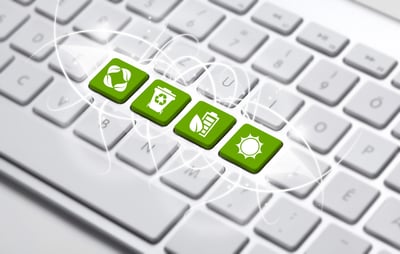
What Makes A Packaging Material Sustainable?
The sustainability of a packaging material is defined by the impact that said material has on the natural environment when compared to alternative materials.
This can be complicated as various packaging materials claim to be sustainable but are not sustainable when compared to other types of packaging materials currently available.
Looking for sustainable packaging materials?
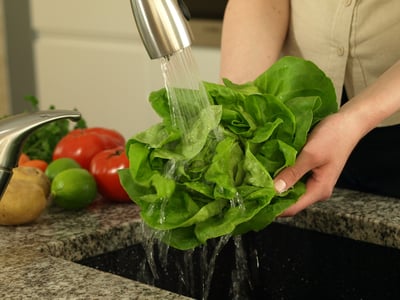
What Is Greenwashing?
Greenwashing (more commonly known as "green sheen") is a type of marketing ploy in which supposedly green public relations and marketing are used to persuade consumers that a company's products are sustainable.
![]()
The Impact Of Greenwashing
Greenwashing results in consumers being led to think a product or packaging material is good or less harmful to the planet earth when in reality, the opposite is true.
This often leads to massive amounts of products being purchased, resulting in significant accumulations of non-earth-friendly materials or increased carbon emissions. These materials often end up in landfills, producing more pollution on our planet earth.
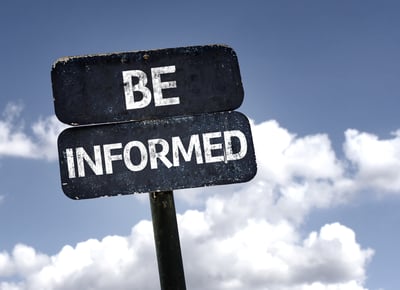
What Are Some Examples Of Greenwashing?
Disclaimer: The example below is not suggesting that all glass manufacturers are deliberately committing acts of greenwashing.
Nor is it in reference to any specific company. Instead, it seeks to provide a hypothetical example of how a less earth-friendly material may be advertised as a form of sustainable packaging.
In some cases, glass may be considered sustainable when compared to alternatives such as metal. However, glass has one of the highest carbon footprints of the most popular packaging materials commonly used today.
As such, when compared to these alternative materials, it is not a "green" product, and some companies who know this will still market the material as if it was.
To illustrate the concept of greenwashing, let us consider glass. Glass is often lauded as a sustainable packaging material because it is 100% recyclable. However, as previously mentioned, glass has one of the highest carbon footprints of all packaging materials.
This is due to the heavier weight of glass.
The production, shipping, disposal, and recycling of glass produces much higher carbon emissions than some of the other most popular packaging supplies, which often negates the material's recyclability.
So while glass is often recycled, the material is actually more detrimental to the environment when compared to other materials such as plastic.
If a company were to market glass as a more sustainable material when compared to polyethylene plastic, this would be an example of greenwashing.

The Hard Truth About Plastic Packaging And Sustainability
In addition to the fact that many plastics (such as polyethylene) are fully recyclable, they produce significantly less carbon during production, transportation, disposal, and recycling.
Each of the alternatives mentioned above generally produces more of a negative impact on the environment when compared to various types of plastics.
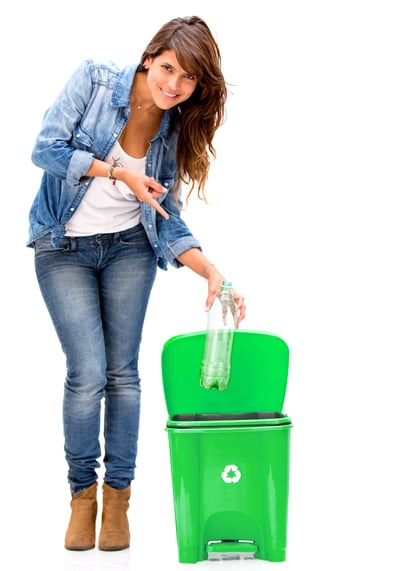
The Complexities Of Single-Stream Recycling
To complicate matters further, the most popular type of recycling in the United States of America is single-stream recycling.
With single-stream recycling, all recyclable materials are placed into a recycling bin. Next, the bins are collected, and the contents are dumped into a recycling truck.
The trucks then transport the materials to a recycling center, where some of the materials are recycled.
However, any materials contaminated with liquids, food particles, adhesives, glues, and other contaminants are usually thrown into a landfill as they can not be recycled when contaminated with the items mentioned above.
Unless users of single-stream recycling remove all food particles, adhesives, liquids, and other contaminants from the materials before being placed in the recycling bin, these materials will most likely end up in a landfill.
And, even if you remove all the contaminates mentioned above from your recyclable materials before placing them into the recycling bin, they will often not be recycled if those materials come in contact with materials that have not been properly cleaned of contaminates by other users of your single-stream recycling provider.
This is to say, if the clean materials that you placed in your recycling bin become contaminated by the contaminants from other single-stream recycling end-users, they will likely still end up in a dump.

The Truth About Plastic Packaging Is A Hard Pill To Swallow
Because of all the dynamics mentioned above, much of the materials you assume are being recycled are not being recycled.
And, even if they were, the amount of carbon produced during the total life cycle of materials such as glass, metal, and cardboard still makes these materials less sustainable than plastic most of the time.
While this is an uncomfortable truth, it is a truth nonetheless.
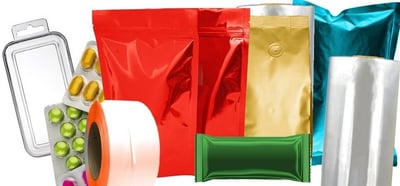
What Are The Most Sustainable Forms Of Packaging Available Today?
At the end of the day, the most environmentally friendly packaging materials currently available are plastics.
This is true for some forms of both recyclable and non-recyclable plastic. This may come as an unwanted surprise, but it is the truth of the situation.

Where Can You Buy Sustainable Packaging Materials?
Suppose you are looking to purchase the most sustainable packaging materials currently available on the market today. In that case, you will do well to buy flexible packaging materials from packaging manufacturers, packaging distributors, online retailers, or other places where flexible packaging materials are sold.
If you are interested in learning more about sustainable packaging materials and where to buy them, it is well-advised to speak with a packaging specialist.
They will help you purchase sustainable packaging materials for your products and help you find the appropriate vendor for your needs, even if that vendor is not us.
About Nathan Dube
As the Digital Marketing Specialist at Industrial Packaging, I am honored to create content for such a phenomenal company and work with one of the greatest teams in the Packaging Industry. Whether creating a video, writing blog posts or generating other pieces of content and multimedia, I am always excited to help educate and inspire our prospects and clients to reach their highest potential in regards to their packaging processes and needs.




